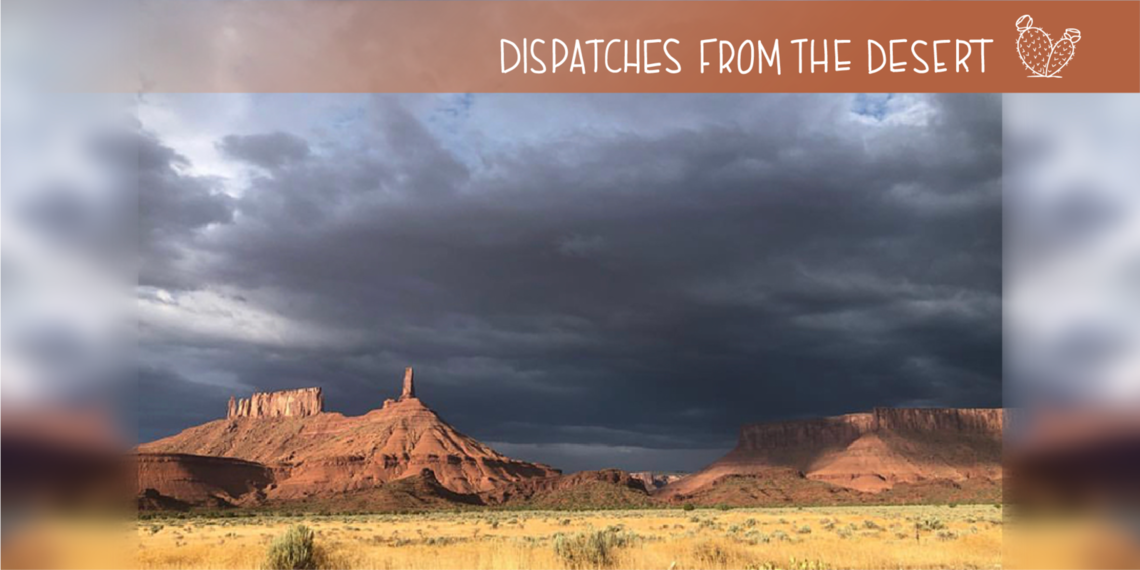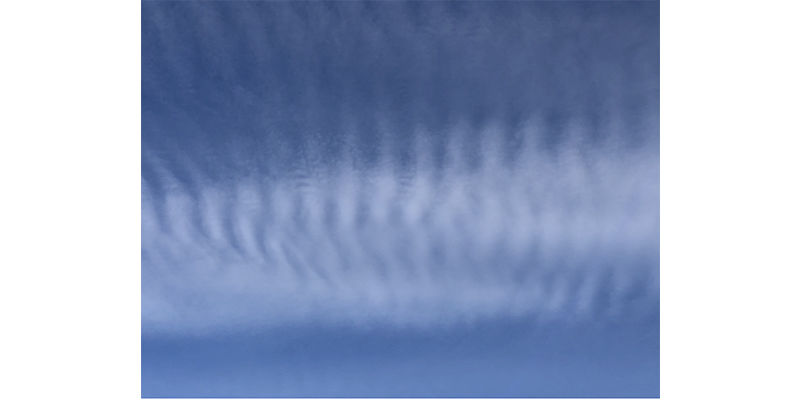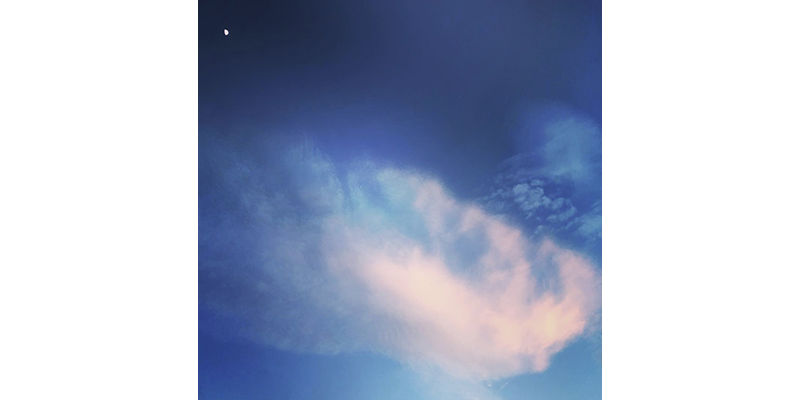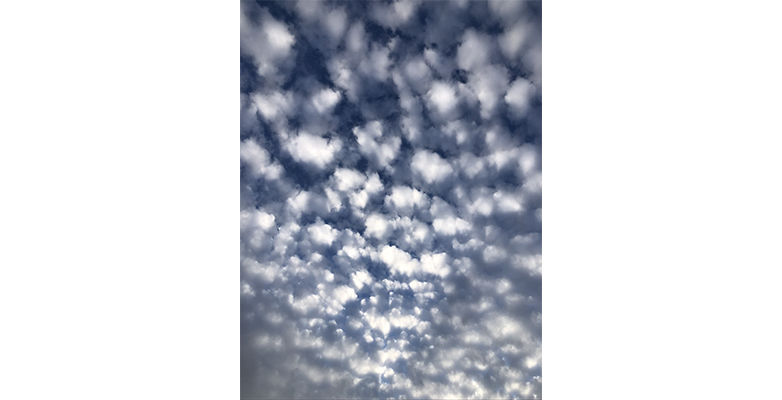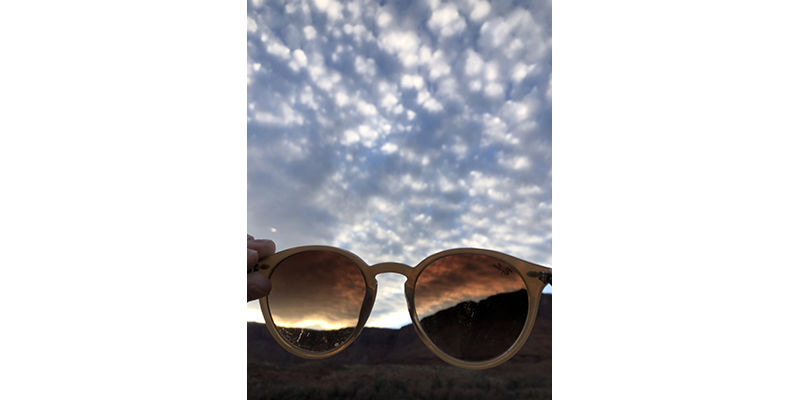30 April 2020
Castle Valley, Utah
y moods in this pandemic are as capricious as clouds – minute by minute, clouds show us how to shape shift, how to hold rain and how to let it go. They are the guardians of atmosphere, inner and outer states of being. Clouds tell us to keep moving or dissipate. Both acts have their beauty.
A sky of cumulus clouds that sail across the blue like ships are lofty;
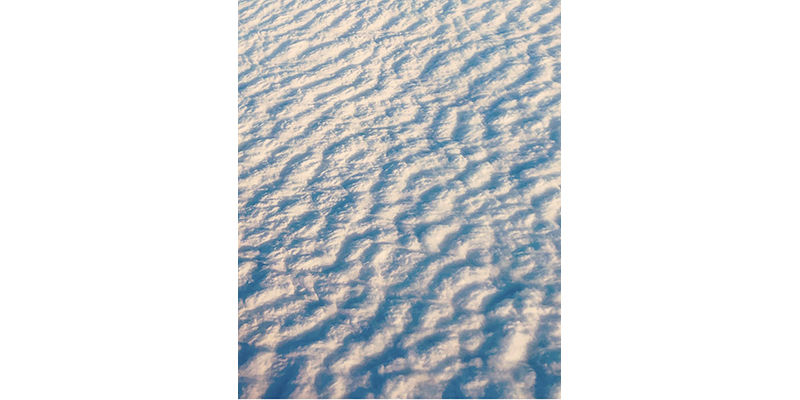
cirrus clouds remind me of horse tails swishing in the breeze;
cirrocumulus clouds are high altitude clouds 16,000 feet above the desert that predict cold temperatures as they are made of ice crystals primarily seen in winter. They are among my favorite clouds looking like a sky full of cotton balls.
In contrast, stratus clouds are low-lying clouds, fog hiding mesas, arches and spires.
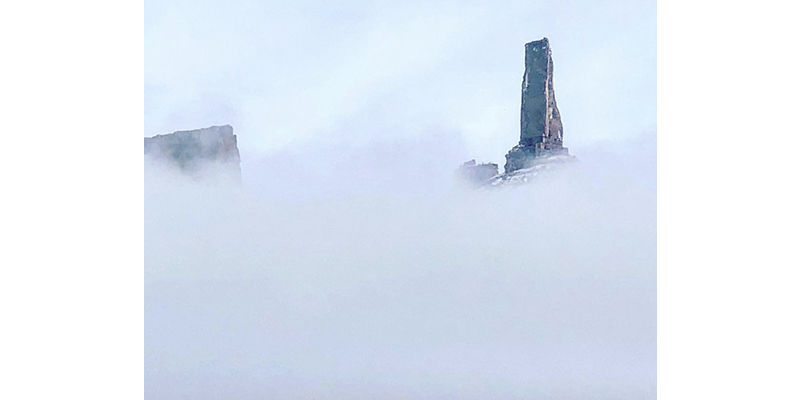
But the nimbostratus clouds thrill me the most, the dark clouds, black, sometimes navy blue, bringing in storms with rain or snow. Drama arrives.
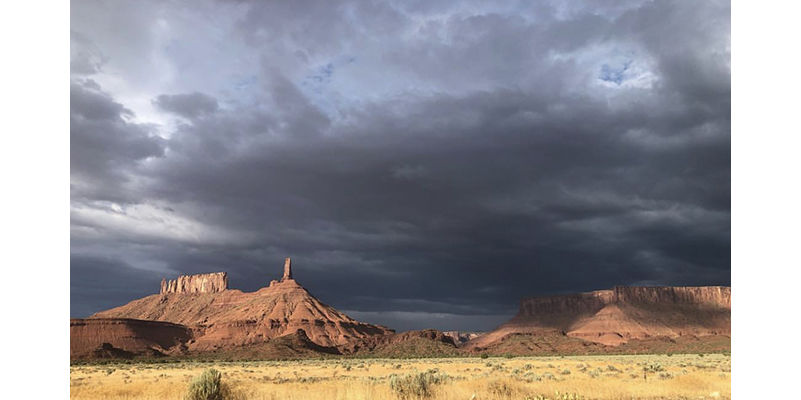
I feel another storm coming as America opens up for business on May 1, 2020. The lockdown is over. The protestors got their way. They say people want to go back to work. The economy is suffering. But so are people. There are over a million cases of coronavirus. 64,000 people are dead. Boston, Massachusetts just had its highest number of deaths today. All is not well. And I fear we will pay a price for our impatience. If a lifetime of cloud spotting has taught me anything it is no clear sky is stable, there are always more clouds coming.
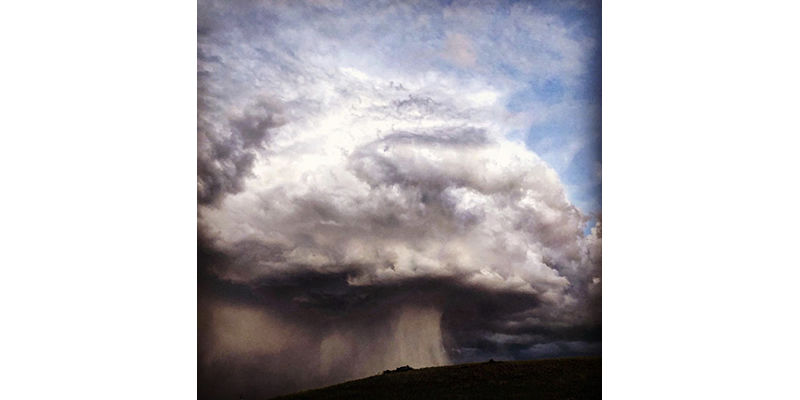
Take the corona cloud as an example. It is linked to iridescence often seen in a thin veneer of a cirrostratus cloud. If you see an arc of color in the sky edged in orange it is likely a corona flaming bright and foreboding. But “The Cloud Collector’s Handbook” warns cloud spotters not to confuse “a corona from a halo…nor should they confuse it with ‘a glory.’”
To see a glory, the sun must be behind you. If you’re lucky, your shadow will appear inside a circular rainbow, beautifully framed. This I have never seen. I saw my first glory from the window of a plane. The circular iridescent ring appeared on a bed of clouds. And on one occasion, I saw the shadow of the plane inside the ring speeding right along.
I fear we are about to enter something equivalent to a glory in this next phase of the COVID-19 pandemic. We are ready to be set free. We are ready to engage with our families and friends. We are ready to believe the dark days of the coronavirus are behind us because this is what we want. But what we want and what we may get are two different stories. I fear the glory of liberation will send us back to the shadows where we will face the multi-colored circle of quarantine rimmed in orange, the color of prison uniforms.
Watching clouds is watching change. Every day creates another probability of clouds that will forecast the weather. From thunderheads to a sky solely blue, nothing is to be taken for granted in the desert. Nothing is to be seen as normal in these times of coronavirus.
So what do we do? We advocate for better science, we call for more testing and hire teams to trace, track, and map the links of exposure. We wear masks. We distance ourselves physically and try tailgating parties outside instead of dinner parties inside. We look for the signs and symptoms of a patient populace over an impatient one. And we continue to take care of one another.
I love clouds. I have always loved clouds ever since childhood when I spent hours on my back looking up at the sky seeing birds, rabbits, and dinosaurs emerge and rearrange themselves into castles and kings with crown. This was my evidence that the world was magic and in motion, my way of believing the Earth was alive. Watching clouds change color from pink to purple created a bruised sky that taught me not everything was predictable. My imagination was seized. Anything was possible. Later, I learned to read the signs and trust the science, even in something as ephemeral as clouds.
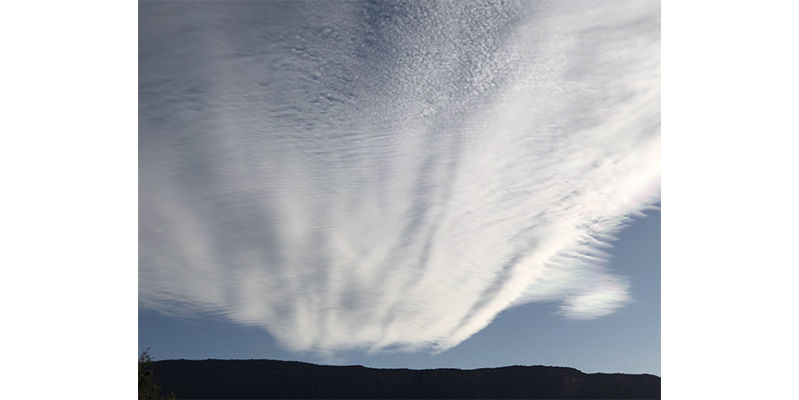
Cloud cover protected one from the sun. A blue sky means cover yourself so you don’t get burned. A rise in temperatures in the winter with low-lying clouds says soon it will snow. Thunderheads flanked by boiling black clouds moving from the west calls for cover. And when the desert smells like rain before it falls on dry land, say the word “petrichor” and breathe it in like a poem. Oils are exuded by certain plants during dry spells. This is the scent of hope. Ozone may be present in the atmosphere if lightning strikes. This is the odor of action. For me, the smell of rain is the end of dust and the relief of water in days of drought.
As we move out of our houses on to the streets, testing the limits of what is safe and what bears risks we are not willing to take, we need to acknowledge that we are living in a very different weather system now where what is invisible can kill us. There are no reliable signs until it is too late. We must trust our senses, alongside our instincts and pay sharp attention to the shape-shifting landscapes before us.
We can no longer look for leadership beyond ourselves. We can no longer look for someone or something to take care of us. We must now take care of each other. The precautionary principle feels prudent. We can take the necessary steps forward and backward, if necessary, as we struggle to be present in an altered world that now begs for a heightened consciousness among us that bows toward the long view.
This is a time of reckoning and awakening. We are still in the grip of a global pandemic. We are not in charge. The virus is in charge. But we can be smart and we can be humble. Until we have a vaccine, we are at the mercy of forces beyond our control. This not simply a political issue or an economic issue, but a spiritual one.
Patience is required as “the dangerous mystic” Meister Eckhart said during a time of plague in the Dark Ages, “When you first begin, you find only darkness as it were a cloud of unknowing. You don’t know what this means except that in your will you feel a simple steadfast intention reaching out towards God…Reconcile yourself to wait in this darkness as long as is necessary, but still go on longing after him whom you love.”
We all define God differently. For me, I am not looking for a heavenly presence, but an earthly one that embodies beauty in change like clouds. We can learn to read the signs and predict what is coming by using science and our collective imagination to dream a new way of being in all types of weather.
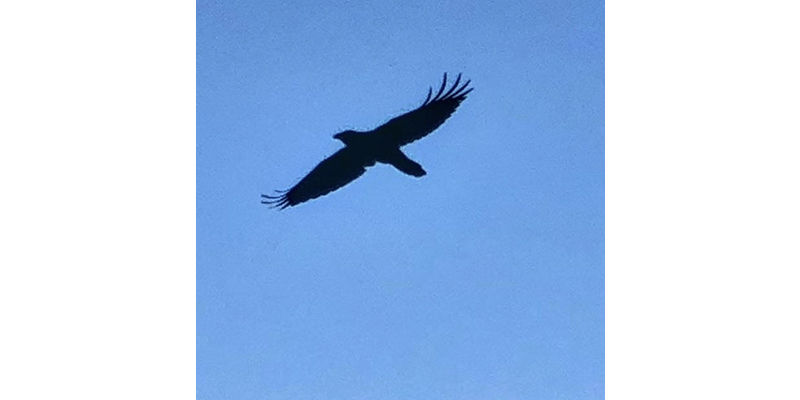
The winds are blowing. The sand dunes are shifting. And I wonder who we are becoming as we slowly emerge out of our homes stronger and more vulnerable than we ever could have imagined.
Terry Tempest Williams
Terry Tempest Williams is a Utah native, writer, naturalist, activist, educator—and patient. In this thirteenth dispatch, Terry explores the “duende,” or the subconscious present in art and poems.
Terry Tempest Williams is a Utah native, writer, naturalist, activist, educator—and patient. On the tenth anniversary of the beginning of the oil spill in the Gulf of Mexico, Terry reflects on ecological change, the coronavirus, and the power of friendship.
Terry Tempest Williams is a Utah native, writer, naturalist, activist, educator—and patient. She reflects on this moment on the threshold of what’s next as the country reopens in this last dispatch from the desert.
